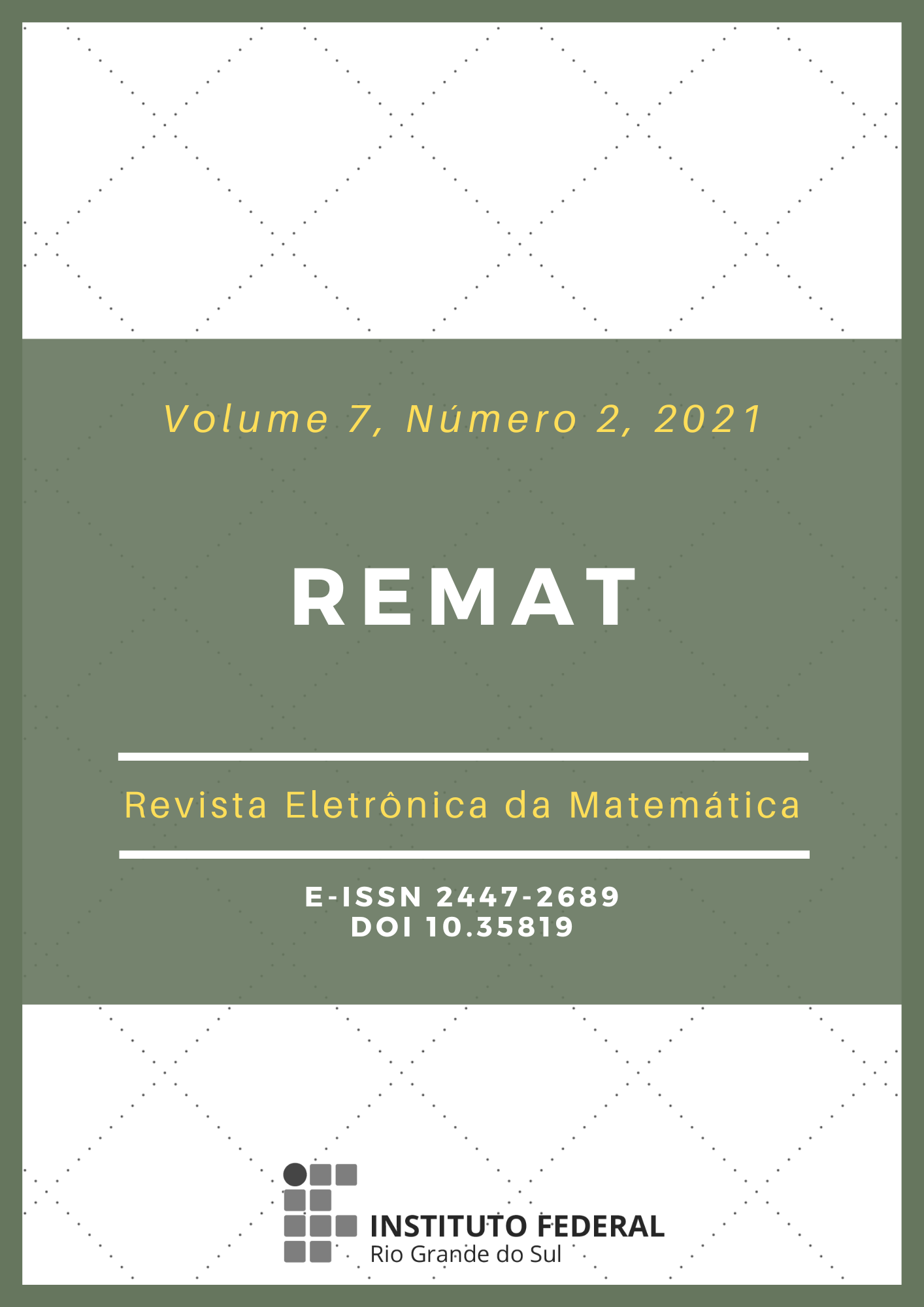Gaussian integral by Taylor series and applications
DOI:
https://doi.org/10.35819/remat2021v7i2id4330Keywords:
Gaussian Integral, Special Functions, Fractional DerivativeAbstract
In this paper, we present a solution for a specific Gaussian integral. Introducing a parameter that depends on a n index, we found out a general solution inspired by the Taylor series of a simple function. We demonstrated that this parameter represents the expansion coefficients of this function, a very interesting and new result. We also introduced some Theorems that are proved by mathematical induction. As a test for the solution presented here, we investigated a non-extensive version for the particle number density in Tsallis framework, which enabled us to evaluate the functionality of the method. Besides, solutions for a certain class of the gamma and factorial functions are derived. Moreover, we presented a simple application in fractional calculus. In conclusion, we believe in the relevance of this work because it presents a solution for the Gaussian integral from an unprecedented perspective.
Downloads
References
ARFKEN, G. B.; WEBER, H. J. Mathematical Methods for Physicists. New York: Academic Press, 2005.
BOAS, M. L. Mathematical methods in the physical sciences. New Jersey: John Wiley & Sons, 2006.
CONRAD, K. T. The Gaussian Integral, 2013. Available in: https://www.semanticscholar.org/paper/THE-GAUSSIAN-INTEGRAL-Conrad/4687538f80e333c175691d627dc1254eef3605f8. Access in: 2020.
DAVIS, P. J. Leonhard Euler's Integral: A Historical Profile of the Gamma Function: In Memoriam: Milton Abramowitz. The American Mathematical Monthly, v. 66, p. 847-869, 1959.
GREINER, W. Quantum Mechanics: An Introduction. Berlin: Springer, 1990.
GREINER, W. Thermodynamics and Statistical Mechanics. Berlin: Springer, 1995.
GRONAU, D. Why is the gamma function so as it is? Teaching Mathematics and Cumputer Science, v. 1, p. 43-53, 2003.
HERNANDEZ, S. M. Termodinàmica i Mecànica estadìstica. London: Lulu, 2015.
LAPLACE, P. S. Théorie Analytiques des Probabilités. Paris: Courcier, 1820.
OLIVEIRA, E. C.; MACHADO, J. A. T. A review of definitions for fractional derivatives and integral. Mathematical Problems in Engineering, v. 2014, p. 1-6, 2014.
PATHRIA, R. K. Statistical Mechanics. Oxford: Butterworth-Heinemann, 1996.
PESSAH, M. E.; TORRES, D. F.; VUCETICH, H. Statistical mechanics and the description of the early universe. (I). Foundations for a slightly non-extensive cosmology. Physica A, v. 297, p. 164-200, 2001.
RILEY, K. F.; HOBSON, M. P.; BENCE , S. J. Mathematical Methods for Physics and Engineering. Cambridge: Cambridge University Press, 2006.
SAKURAI, J. J. Modern Quantum Mechanics. New York: Addison-Wesley, 1985.
SALINAS, S. R. A. Introduction to Statistical Physics. New York: Springer, 2001.
SHEN, K. M.; ZHANG, B. W.; WANG, E. K. Generalized ensemble theory with non-extensive statistics. Physica A, v. 487, p. 215-224, 2017.
SPIEGEL, M. R. ; SCHILLER, J. ; SRINIVASAN, R. A. Schaum's Outline of Probability and Statistics. New York: McGraw-Hill, 2001.
STAHL, S. The Evolution of the Normal Distribution. Mathematics Magazine, v. 79, n. 2, p. 96-113, 2006.
STIGLER, S. M. Laplace's 1774 memoir on inverse probability. Statistical Science, v. 1, p. 359-378, 1986.
STURM, J. K. F. Cours d'Analyse de l’école polytechnique. Paris: Mallet-Bachelier, 1857.
TSALLIS, C. Possible generalization of Boltzmann-Gibbs statistics. Journal of Statistical Physics, v. 52, p. 479-487, 1988.
WEISSTEIN, E. W. Gaussian integral. From MathWorld-A Wolfram Web Resource. Available in: http://mathworld.wolfram.com/GaussianIntegral.html. Access in: 2020.
WEISSTEIN, E. W. Hypergeometric Function. From MathWorld-A Wolfram Web Resource. Available in: https://mathworld.wolfram.com/HypergeometricFunction.html. Access in: 2020.
Downloads
Published
Issue
Section
License
Copyright (c) 2021 REMAT: Revista Eletrônica da Matemática

This work is licensed under a Creative Commons Attribution 4.0 International License.
REMAT retains the copyright of published articles, having the right to first publication of the work, mention of first publication in the journal in other published media and distribution of parts or of the work as a whole in order to promote the magazine.
This is an open access journal, which means that all content is available free of charge, at no cost to the user or his institution. Users are permitted to read, download, copy, distribute, print, search or link the full texts of the articles, or use them for any other legal purpose, without requesting prior permission from the magazine or the author. This statement is in accordance with the BOAI definition of open access.













 https://orcid.org/0000-0002-0893-7426
https://orcid.org/0000-0002-0893-7426


















